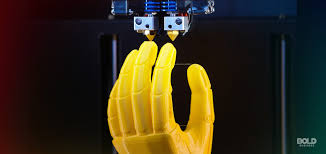3D Printing Innovations in the Medical Field
by Rob J. Quality Links
With rapid additive manufacturing techniques, humans have been producing various 3D designs for decades. For instance, engineers and health care professionals have revolutionized the medical field by printing prosthetic limbs and surgical tools. They've also created anatomical models and dental implants, and they're still researching the potential of this technology. Here are recent innovations.
Bioprinting
Scientists are researching 3D printing organs, particularly the heart. They've already replicated this body part's valve using collagen mixed with gelatin microparticles and water as ink. But, it hasn't been transplanted to anyone yet. Other bioengineers have also created a series of complex vascular networks through hydrogels, and more studies are being conducted for these to be safely transferred to humans.
Meanwhile, researchers made ink out of animal collagen and human cells, and they printed living skin complete with blood vessels. Similar to an adhesive bandage, the product can be put on top of wounds and burns, and it'll provide accelerated healing. Bioengineers are still studying this innovation before they release it for clinical use.
Surgery Preparation
A surgeon recently had an unusual case where the patient was missing half of their tibia, and there was an uncommon deformity between their two bones. It was the first time the doctor encountered this, and the X-rays and CT scans weren't enough for them to decide on the appropriate procedures. To get a better picture, they printed a 3D model of the joints. The tangible design allowed them to examine the impaired part and come up with treatment options.
The doctor envisions that this modern design will help not just health care professionals but also patients. They'll understand the surgical procedures better when a medical practitioner explains using a physical model, and they can see what their body parts will look like after an operation.
Hair Growth
While transplanting hair from one body part to another has been successful in the past decades, researchers found it challenging to produce these strands in the laboratory. But, with advanced 3D printers, they have made a unique plastic mold where follicles can thrive. It mimics the natural human scalp since it has 0.5-millimeter tiny extensions. Scientists assert that this will help those who are seeking solutions for balding, but more work is needed before it's commercialized.
Innovative technology in medical applications aid doctors in providing better clinical services and improving patients' quality of life. For health care practitioners, bioengineers, and researchers who want to use 3D models in their fields, look for a company that offers laser additive manufacturing in California. With the help of trusted contractors, you can create revolutionary products for the next generation.
Sponsor Ads
Created on Feb 10th 2020 17:59. Viewed 319 times.



